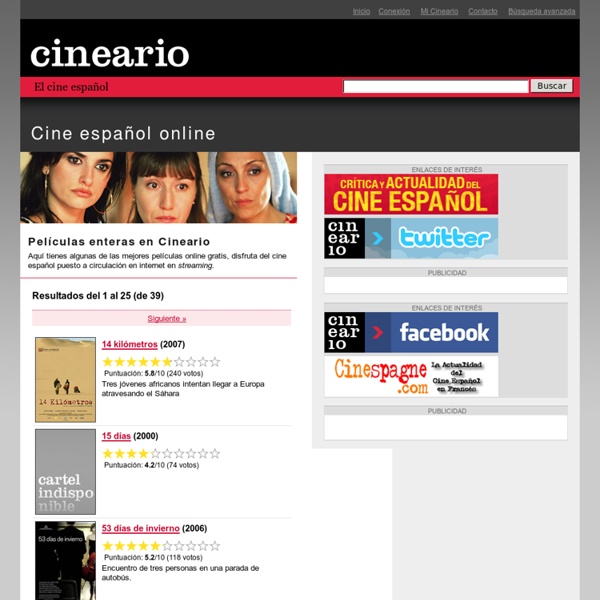



Cinelatino.com.fr Dossiers pédagogiques composés de documents d'accompagnement et d'exercices pratiques pour l'espagnol, l'histoire-géo, la lecture de l'image et l'analyse filmique actualites Dossiers pédagogiques des films [re]programmés en séances scolaires en 2013: > prochainement (par ordre alphabétique) archives archives des films de 2007 à aujourd'hui (par ordre alphabétique) Alamar De Pedro González Rubio, Mexique, 1h15 Collège et lycée Fiches pédagogiques sur le site de l'Académie de Nantes Dossier pédagogique réalisé par Festival des 3 continents 2010 télécharger Retrouvez des extraits du film, l'affiche à télécharger, la bande-annonce, photos, dossier de presse, etc. sur le site du distributeur, Epicentre films Cañada Morrison (Ciencias Naturales) De Matias Lucchesi, Argentine/France, 2014, 1h40 Collège Disciplines concernées : Espagnol, Français. Dossier pédagogique pour l'espagnol réalisé par Zéro de conduite: télécharger Entretien en espagnol avec le réalisateur: télécharger No V.O.
FilmAffinity Nosotros y nuestros almacenamos o accedemos a información en un dispositivo, tales como cookies, y procesamos datos personales, tales como identificadores únicos e información estándar enviada por un dispositivo, para anuncios y contenido personalizados, medición de anuncios y del contenido e información sobre el público, así como para desarrollar y mejorar productos. Con su permiso, nosotros y nuestros socios podemos utilizar datos de localización geográfica precisa e identificación mediante las características de dispositivos. Puede hacer clic para otorgarnos su consentimiento a nosotros y a nuestros socios para que llevemos a cabo el procesamiento previamente descrito. Tenga en cuenta que algún procesamiento de sus datos personales puede no requerir de su consentimiento, pero usted tiene el derecho de rechazar tal procesamiento.